Câu hỏi:
Read the following passage about Generations Z and Alpha: Born Multicultural Citizens and mark the letter A, B, C or D on your answer sheet to indicate the option that best fits each of the numbered blanks from 18 to 22.
Generation Z, born between 1997 and 2012, has grown up in a world (18)_________. These young people use smartphones and computers every day to talk with friends from different parts of the world. If they had been born 30 years earlier, they would not have had these opportunities to experience global connections. They are learning about different cultures, languages, and traditions not just from books but through real online friendships.
Generation Alpha, which includes children born after 2013, is even more connected. The toys that Generation Alpha plays with often teach them about global issues while they have fun. Many schools (19)_________. These young students, who come from diverse backgrounds, are creating a new kind of society where differences are celebrated.
(20)_________. Generation Z students participate in exchange programs and travel more than previous generations did. (21)_________, sharing their daily lives and learning from each other.
The world that these generations are creating will be more inclusive and understanding. Traditional borders are becoming less important while cultural exchange is valued more highly. Generation Z and Alpha children, (22)_________, will likely become adults who solve problems together across cultural lines. The future looks promising with these multicultural citizens leading the way.
are now warning these teenagers about digital dangers which corrupt their values
are now teaching these children to be global citizens who respect all cultures
having restricted these students from websites where cultures mix freely
are now preparing these children for national tests whom eliminate cultural topics
Đáp án đúng: B
Giải Thích: Kiến thức về cấu trúc câu
A. are now warning these teenagers about digital dangers which corrupt their values: Sai. Mặc dù có thể một số trường học cảnh báo về các mối nguy hiểm kỹ thuật số, nhưng đây không phải là thông điệp chính trong đoạn văn. Đoạn văn tập trung vào việc giáo dục học sinh để họ trở thành công dân toàn cầu, không phải chỉ cảnh báo về những nguy cơ.
B. are now teaching these children to be global citizens who respect all cultures: Đúng. Đây chính là thông điệp trọng tâm của đoạn văn. Các trường học hiện nay đang dạy thế hệ trẻ về việc tôn trọng các nền văn hóa khác nhau và trở thành công dân toàn cầu. Đây là mục tiêu của giáo dục trong thế giới toàn cầu hóa ngày nay.
C. having restricted these students from websites where cultures mix freely: Sai. Điều này hoàn toàn ngược lại với bối cảnh trong đoạn văn, nơi các trường học đang tạo ra môi trường cho học sinh tiếp cận và học hỏi các nền văn hóa khác nhau, chứ không phải ngăn cản họ.
D. are now preparing these children for national tests whom eliminate cultural topics: Không đúng. Đoạn văn không đề cập đến việc chuẩn bị học sinh cho các kỳ thi quốc gia mà bỏ qua các chủ đề văn hóa. Trái lại, việc học văn hóa đa dạng là một phần quan trọng trong giáo dục của thế hệ Z và Alpha.
Tạm Dịch:
Many schools are now teaching these children to be global citizens who respect all cultures.
(Nhiều trường học hiện nay đang dạy trẻ em trở thành công dân toàn cầu, tôn trọng mọi nền văn hóa.)
Câu hỏi này thuộc đề thi trắc nghiệm dưới đây, bấm vào Bắt đầu thi để làm toàn bài
Bộ đề thi giúp học sinh lớp 12 làm quen với cấu trúc và nội dung đề thi tốt nghiệp THPT môn Tiếng Anh năm 2025. Đề thi được xây dựng theo định hướng của Bộ GD ĐT, bao gồm các phần Ngữ âm, Từ vựng - Ngữ pháp, Chức năng giao tiếp, Kỹ năng đọc hiểu, Kỹ năng viết và Phát âm - Trọng âm. Hệ thống câu hỏi đa dạng, bám sát chương trình học, giúp học sinh rèn luyện kỹ năng làm bài và nâng cao tư duy ngôn ngữ. Đáp án chi tiết đi kèm hỗ trợ học sinh tự ôn tập, đánh giá năng lực và chuẩn bị tốt nhất cho kỳ thi quan trọng.
Câu hỏi liên quan
Giải Thích: Kiến thức về mệnh đề độc lập - nghĩa của câu
A. Educators limit access to foreign materials and promote only traditional language skills: Sai. Không có thông tin nào trong đoạn văn nói rằng các nhà giáo dục hạn chế tài liệu nước ngoài và chỉ tập trung vào các kỹ năng ngôn ngữ truyền thống. Ngược lại, việc khuyến khích học sinh tiếp cận các nền văn hóa và ngôn ngữ toàn cầu là một yếu tố quan trọng.
B. Schools discourage students from exploring global cultures and focus on local identity: Sai. Đoạn văn không đề cập đến việc các trường học hạn chế việc khám phá văn hóa toàn cầu. Ngược lại, giáo dục đa văn hóa được khuyến khích, và các trường học tạo ra môi trường để học sinh hiểu biết về thế giới.
C. Teachers emphasize national achievements and minimize the value of multicultural education: Không đúng. Trong bối cảnh của đoạn văn, các giáo viên không chỉ nhấn mạnh thành tựu quốc gia mà còn khuyến khích giá trị của giáo dục đa văn hóa.
D. Parents are encouraging their children to learn languages and understand international perspectives: Đúng. Đoạn văn mô tả cách mà các bậc phụ huynh đang khuyến khích con cái học các ngôn ngữ và hiểu các quan điểm quốc tế. Điều này giúp trẻ em trở thành công dân toàn cầu và nhận thức được tầm quan trọng của sự đa dạng văn hóa.
Tạm Dịch:
Parents are encouraging their children to learn languages and understand international perspectives
(Các bậc phụ huynh đang khuyến khích con em mình học ngoại ngữ và hiểu biết về quan điểm quốc tế)
Giải Thích: Kiến thức về mệnh đề độc lập - nghĩa của câu
A. Technology makes it possible for them to maintain friendships across borders: Đúng. Công nghệ giúp thế hệ Z duy trì các mối quan hệ bạn bè xuyên biên giới, điều này phù hợp với thông điệp trong đoạn văn về sự kết nối toàn cầu mà công nghệ mang lại.
B. Technology creates barriers preventing teenagers from understanding foreign cultures: Sai. Đây là một sự hiểu lầm vì công nghệ thực tế không tạo ra rào cản mà ngược lại, nó giúp kết nối các nền văn hóa và giảm bớt khoảng cách giữa các quốc gia.
C. Regulations restrict online interactions between students from different countries: Không đúng. Đoạn văn không nói đến việc có quy định nào ngăn cấm sự tương tác trực tuyến giữa học sinh từ các quốc gia khác nhau. Thực tế, công nghệ làm giảm bớt rào cản này.
D. Schools discourage digital connections that expose children to global perspectives: Sai. Các trường học không ngăn cấm các kết nối kỹ thuật số mà ngược lại, họ khuyến khích học sinh sử dụng công nghệ để tiếp cận các quan điểm toàn cầu.
Tạm Dịch:
Technology makes it possible for them to maintain friendships across borders, sharing their daily lives and learning from each other.
(Công nghệ giúp họ duy trì tình bạn xuyên biên giới, chia sẻ cuộc sống thường ngày và học hỏi lẫn nhau.)
Giải Thích: Kiến thức về phân từ hiện tại, phân từ hoàn thành
A. growing up fearing cultural differences greatly: Sai. Câu này không phải là một mệnh đề quan hệ rút gọn đúng. Nếu ta mở rộng, câu này sẽ trở thành "Generation Z and Alpha children who are growing up fearing cultural differences greatly", tức là có động từ "are" trong mệnh đề quan hệ. Tuy nhiên, "fearing" (sợ hãi) không phải là động từ chính có thể được rút gọn một cách hợp lý trong bối cảnh này.
B. having grown up with diversity as normal: Đúng. Đây là một cấu trúc rút gọn chính xác. Câu này có thể được hiểu là "Generation Z and Alpha children who have grown up with diversity as normal", tức là "Generation Z và Alpha children who have" có thể rút gọn thành "having grown up", vì chủ ngữ và động từ của mệnh đề quan hệ là giống nhau, và ta có thể dùng cấu trúc "having + past participle" để rút gọn.
C. having isolated themselves from foreign influences: Sai. Đây là một cấu trúc không hợp lý trong bối cảnh này. Nếu mở rộng câu này, chúng ta sẽ có "Generation Z and Alpha children who have isolated themselves from foreign influences", nhưng điều này không phản ánh đúng nội dung của đoạn văn. Đoạn văn không nói rằng các thế hệ này cô lập bản thân khỏi ảnh hưởng từ nước ngoài.
D. rejecting traditions outside their comfort zone: Sai. Mặc dù cấu trúc này có thể rút gọn, nhưng nội dung của đoạn văn không nói về việc các thế hệ này từ chối truyền thống. Thực tế, họ được mô tả là chấp nhận và hiểu các nền văn hóa khác nhau, chứ không phải từ chối chúng.
Tạm Dịch:
Generation Z and Alpha children, having grown up with diversity as normal, will likely become adults who solve problems together across cultural lines.
(Trẻ em thế hệ Z và Alpha, lớn lên trong sự đa dạng là điều bình thường, có khả năng sẽ trở thành những người trưởng thành cùng nhau giải quyết vấn đề vượt qua ranh giới văn hóa.)
Giải Thích: Phát minh nào sau đây KHÔNG được coi là kết quả của một sai lầm?
A. Penicillin. Đáp án này sai vì Penicillin được phát hiện nhờ một sự tai nạn trong phòng thí nghiệm của Alexander Fleming, như được mô tả trong đoạn văn đầu tiên. Fleming thấy nấm mốc phát triển trên đĩa thí nghiệm và nhận thấy nấm mốc tiêu diệt vi khuẩn xung quanh nó, từ đó phát hiện ra Penicillin.
B. Microwave oven. Đáp án đúng. Microwave oven (lò vi sóng) không được đề cập trong bài viết. Mặc dù lò vi sóng được phát minh nhờ một tai nạn (khi một nhà khoa học tình cờ phát hiện ra sóng vi ba có thể làm nóng thực phẩm), điều này không được đề cập trong đoạn văn.
C. Post-it Notes. Đáp án này sai vì Post-it Notes được phát minh nhờ một sai lầm khi Spencer Silver tạo ra một loại keo yếu. Sản phẩm này sau đó trở thành Post-it Notes nổi tiếng, được mô tả trong đoạn văn thứ hai.
D. Chocolate chip cookies. Đáp án này sai vì chocolate chip cookies được phát minh bởi Ruth Wakefield khi bà sử dụng mảnh chocolate bán ngọt thay vì chocolate nướng trong một lần nấu ăn, tạo nên chiếc bánh quy nổi tiếng này.
Giải Thích: Từ “fortunate” ở đoạn 1 trái nghĩa với _________.
A. deliberate. Đáp án đúng. "Deliberate" có nghĩa là cố ý, có chủ đích, trái ngược hoàn toàn với "fortunate", vốn có nghĩa là tình cờ, may mắn. Một sự tình cờ may mắn không phải là kết quả của sự cố ý, nên "deliberate" là từ trái nghĩa với "fortunate".
B. detrimental. Đáp án này sai. "Detrimental" có nghĩa là có hại, không phải là từ đối nghĩa của "fortunate". Trong khi "fortunate" mang nghĩa tích cực, "detrimental" lại mang nghĩa tiêu cực, nhưng chúng không phải là đối nghĩa trực tiếp với nhau.
C. calamitous. Đáp án này sai. "Calamitous" có nghĩa là tai họa hoặc thảm khốc, cũng không phải là từ đối nghĩa với "fortunate". Tuy nhiên, nó có thể được coi là một từ mang nghĩa xấu, nhưng "deliberate" mới là từ đối nghĩa chính xác nhất với "fortunate".
D. insignificant. Đáp án này sai. "Insignificant" có nghĩa là không quan trọng, không có ý nghĩa, và không phải là đối nghĩa với "fortunate" trong bối cảnh này.
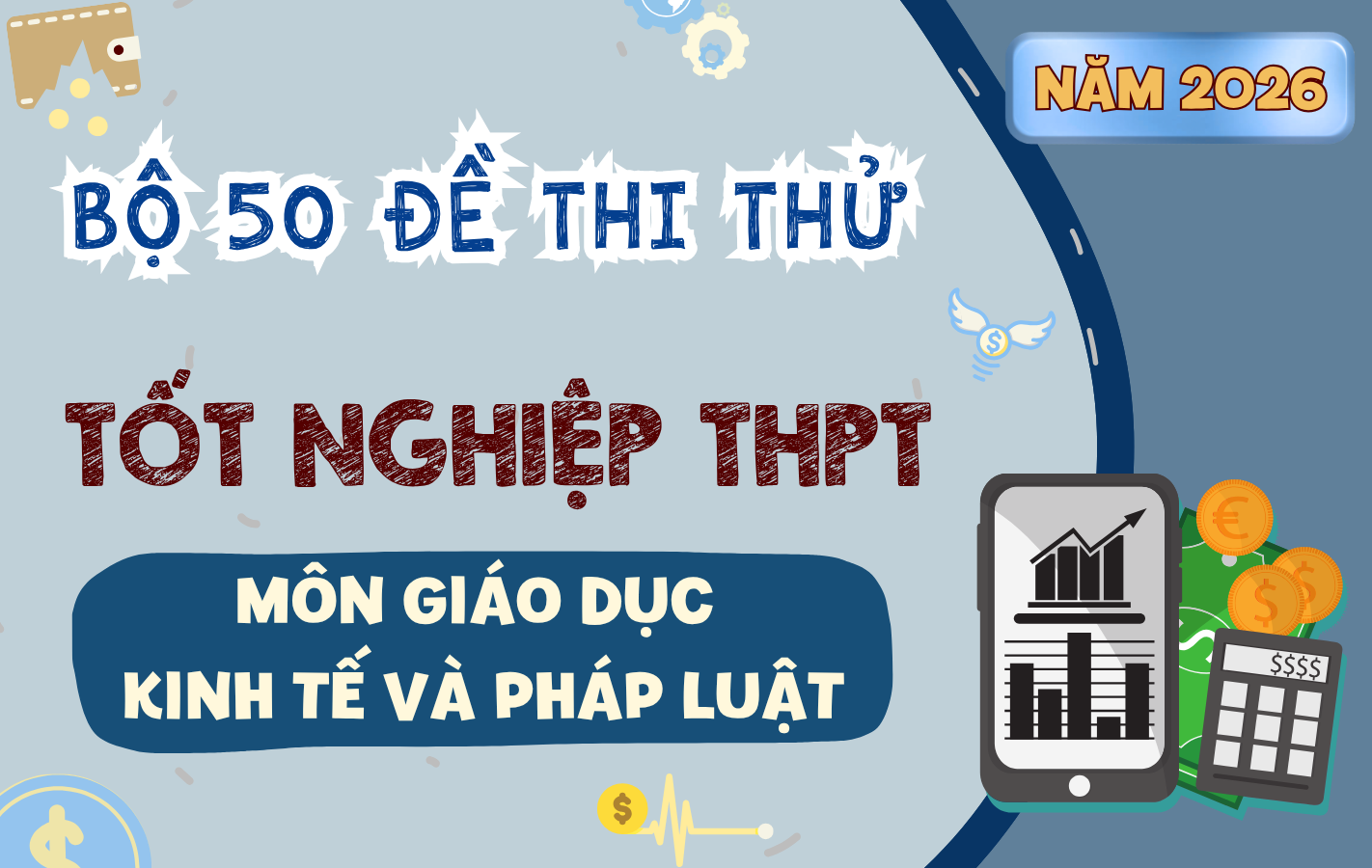
Bộ 50 Đề Thi Thử Tốt Nghiệp THPT Giáo Dục Kinh Tế Và Pháp Luật Năm 2026 – Theo Cấu Trúc Đề Minh Họa Bộ GD&ĐT
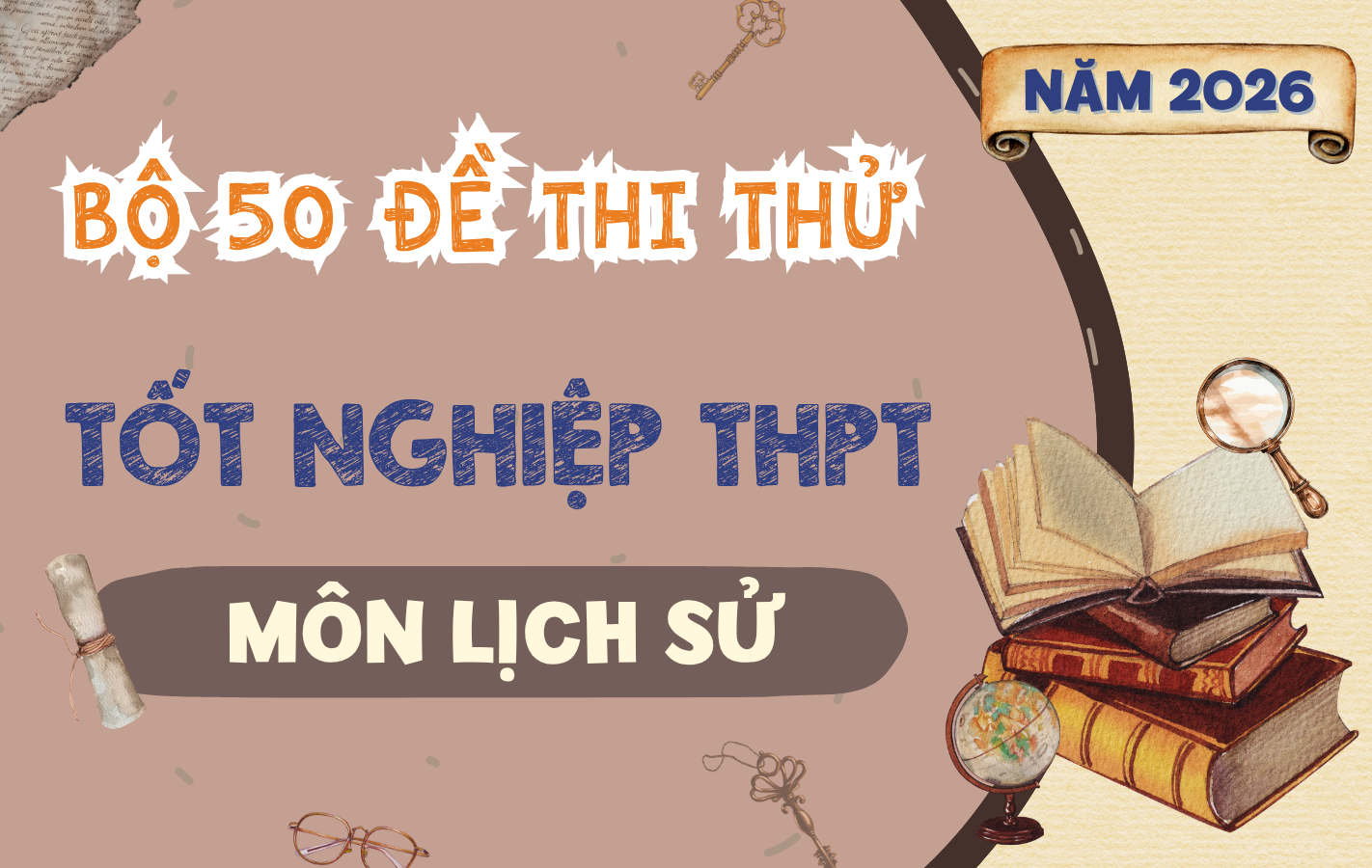
Bộ 50 Đề Thi Thử Tốt Nghiệp THPT Lịch Sử Học Năm 2026 – Theo Cấu Trúc Đề Minh Họa Bộ GD&ĐT
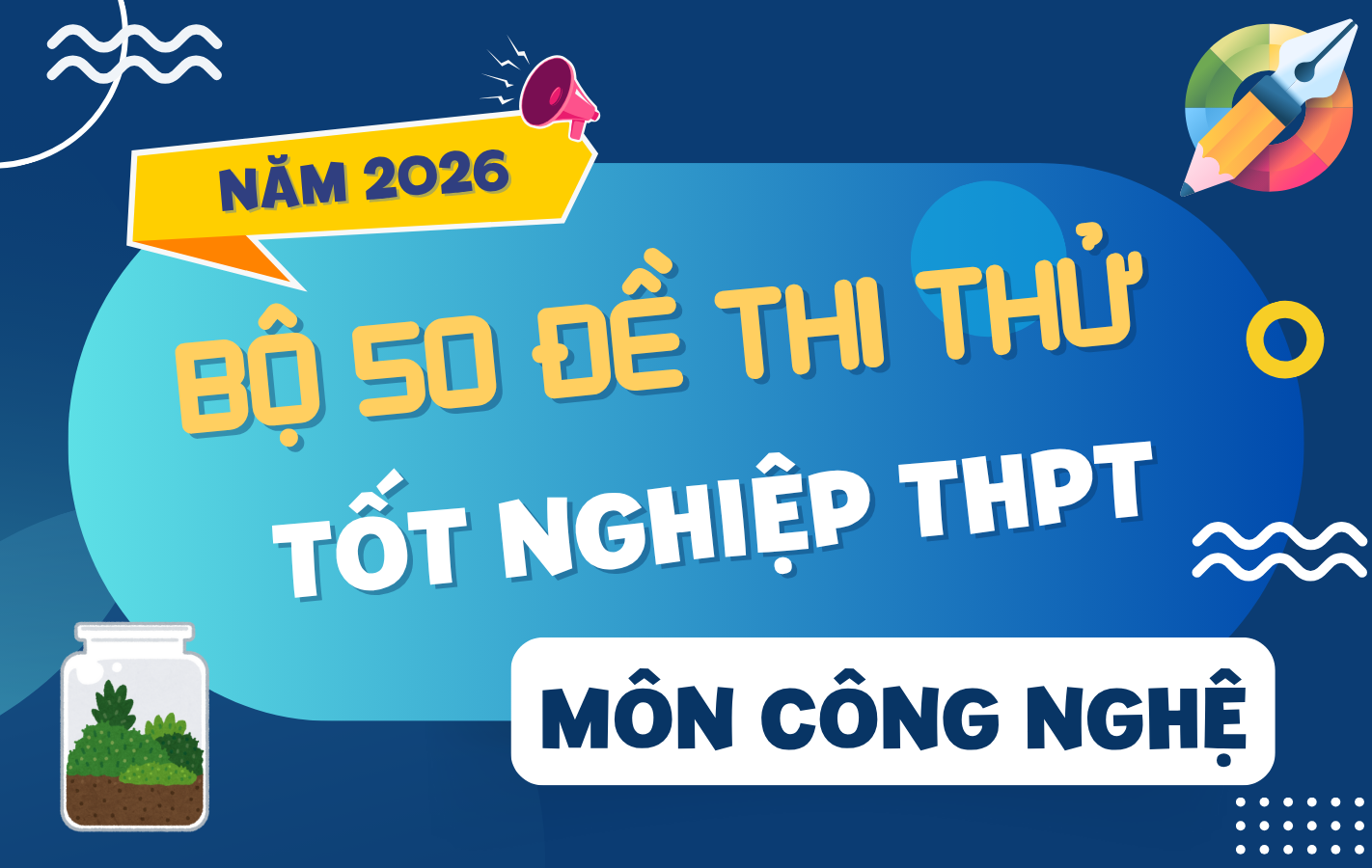
Bộ 50 Đề Thi Thử Tốt Nghiệp THPT Công Nghệ Năm 2026 – Theo Cấu Trúc Đề Minh Họa Bộ GD&ĐT
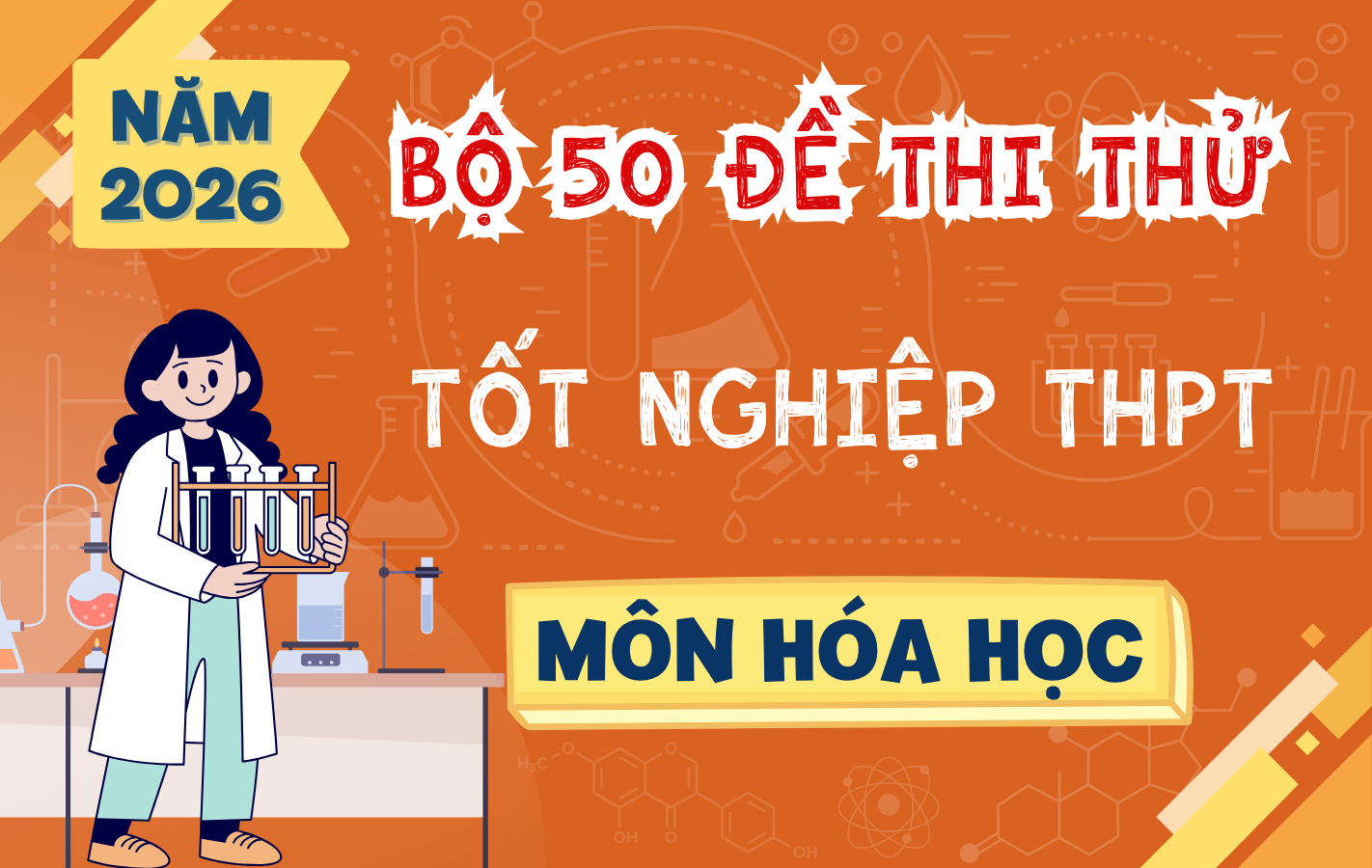
Bộ 50 Đề Thi Thử Tốt Nghiệp THPT Môn Hóa Học Năm 2026 – Theo Cấu Trúc Đề Minh Họa Bộ GD&ĐT
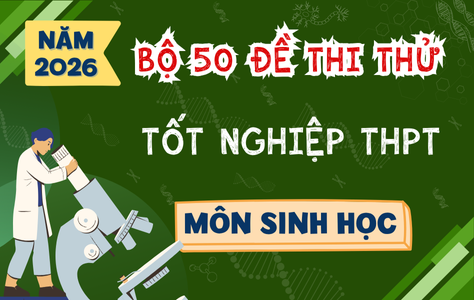
Bộ 50 Đề Thi Thử Tốt Nghiệp THPT Môn Sinh Học Năm 2026 – Theo Cấu Trúc Đề Minh Họa Bộ GD&ĐT
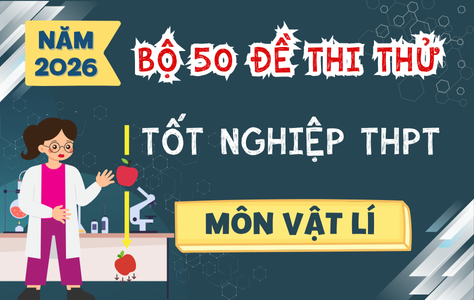
Bộ 50 Đề Thi Thử Tốt Nghiệp THPT Môn Vật Lí Năm 2026 – Theo Cấu Trúc Đề Minh Họa Bộ GD&ĐT
ĐĂNG KÝ GÓI THI VIP
- Truy cập hơn 100K đề thi thử và chính thức các năm
- 2M câu hỏi theo các mức độ: Nhận biết – Thông hiểu – Vận dụng
- Học nhanh với 10K Flashcard Tiếng Anh theo bộ sách và chủ đề
- Đầy đủ: Mầm non – Phổ thông (K12) – Đại học – Người đi làm
- Tải toàn bộ tài liệu trên TaiLieu.VN
- Loại bỏ quảng cáo để tăng khả năng tập trung ôn luyện
- Tặng 15 ngày khi đăng ký gói 3 tháng, 30 ngày với gói 6 tháng và 60 ngày với gói 12 tháng.